“It’s not unusual to be loved by anyone”
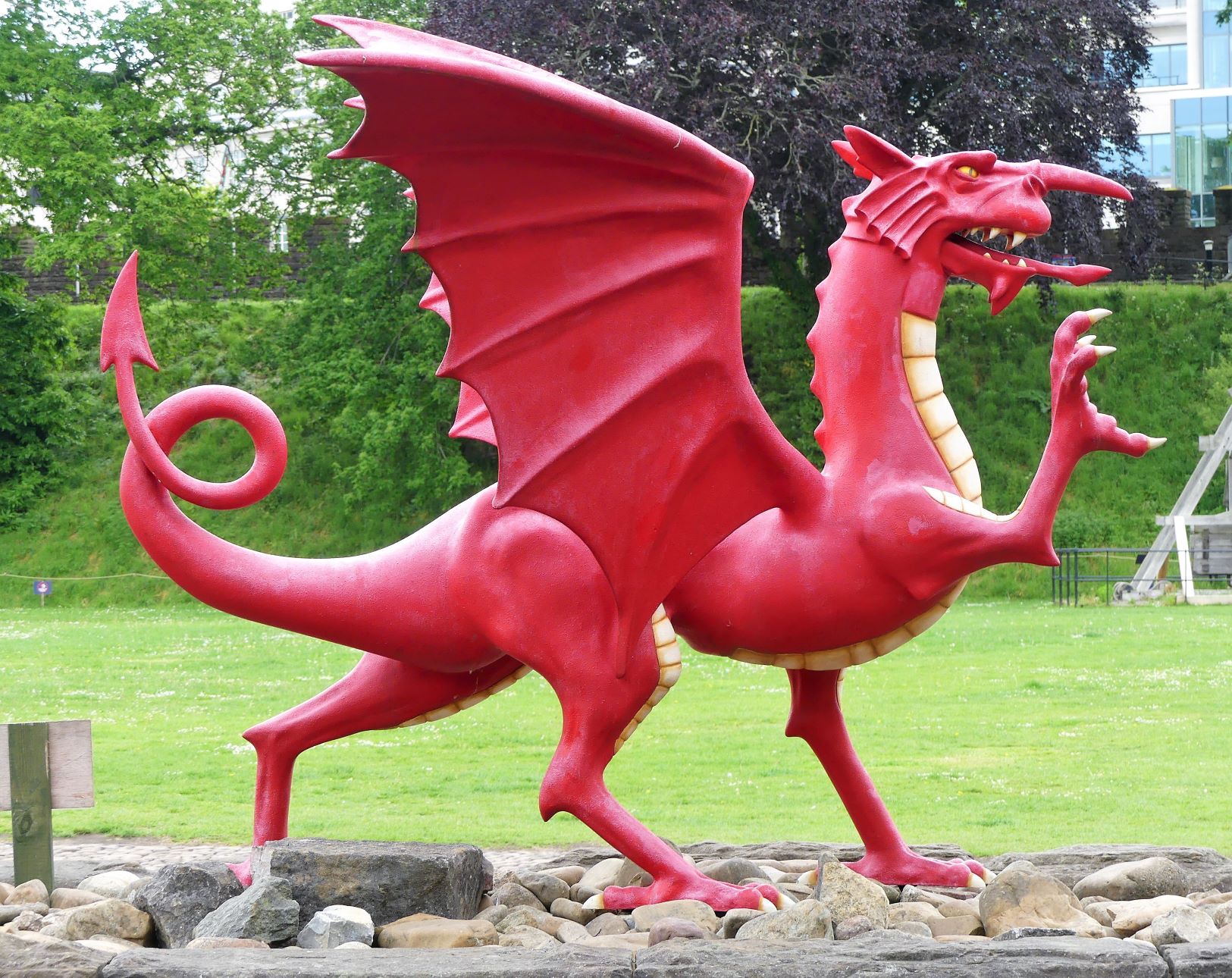
Lyrics, Tom Jones, Welsh singer
WALES
A new day, a new country, a new language, a new love – magical Wales and the Welsh. The moment we crossed into the southeast border, the Welsh National Flag was proudly and boldly waving, with its distinctive, and bright Red Dragon, ferociously standing on a green and white field. And it’s not unusual for all road signs to appear in both English and Welsh. Here’s the thing, don’t even try to read or pronounce Welsh. Fuhgeddaboudit! It’s impossible.

CARDIFF (Caerdydd)
Cardiff and its Castle (Welsh: Castell Caerdydd), is our destination 60 miles from Bath. The modern and thriving port city is the capital and largest in Wales, but the past is also present in the magnificent architectural gems from Victorian times. Cardiff, aka Castle City, has the most castles in the world. We’re in the right place.
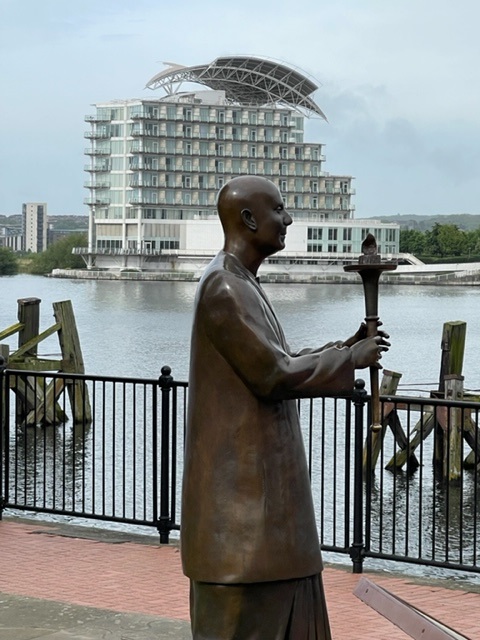
Harmony Peace Statue
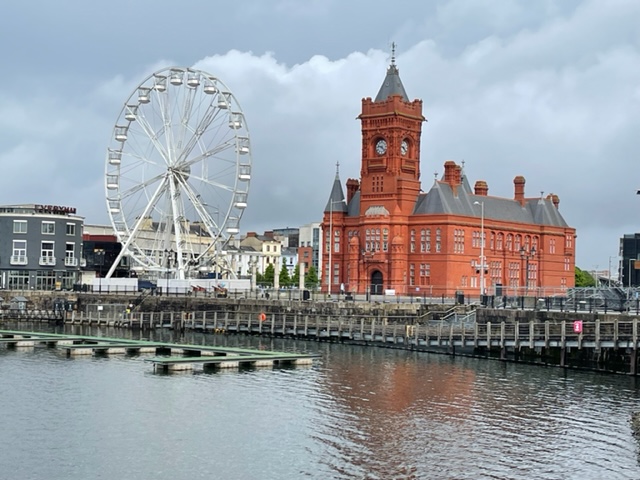
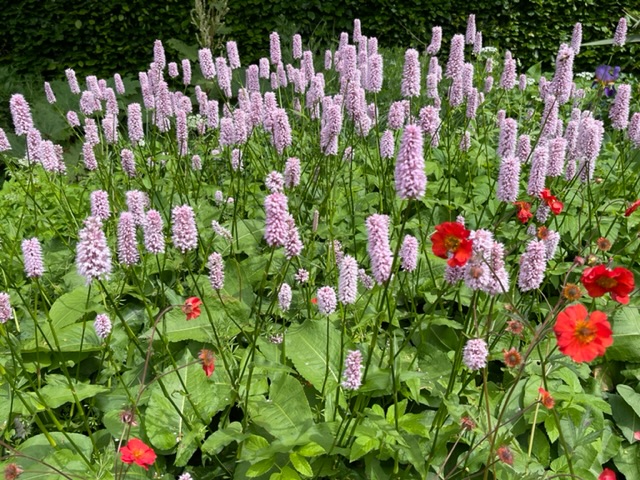
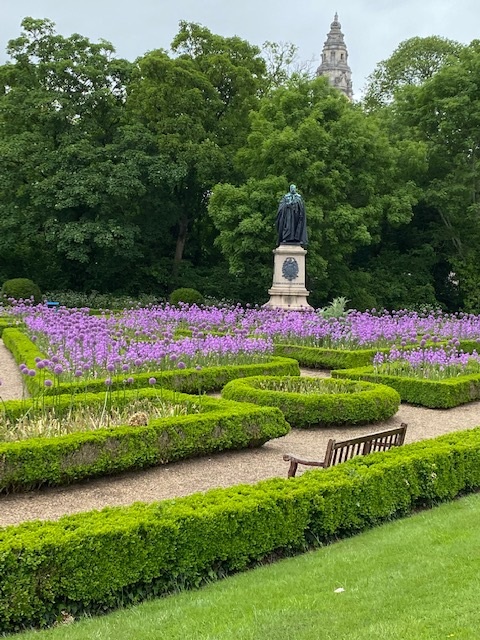
Cardiff Castle is in walking distance of our quaint, Victorian B&B. Beautiful parks border it and lead to Castle Street. There, we stroll along the famous Animal Wall (completed in the 1920s) with its realistic, sculptured statues of monkeys, lions, wolfs, boars, bears, etc. They’ve got deep and menacing, glass eyes that seem to be awaiting, at a moment’s notice, to pounce and attack. It creeped me out; kept my distance, and stayed close to the road just in case one of those stone critters could suddenly come to life by magic. It’s Wales and magical things do happen!
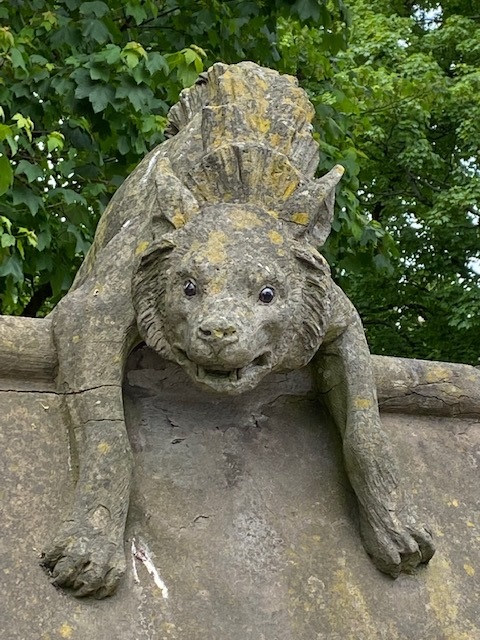
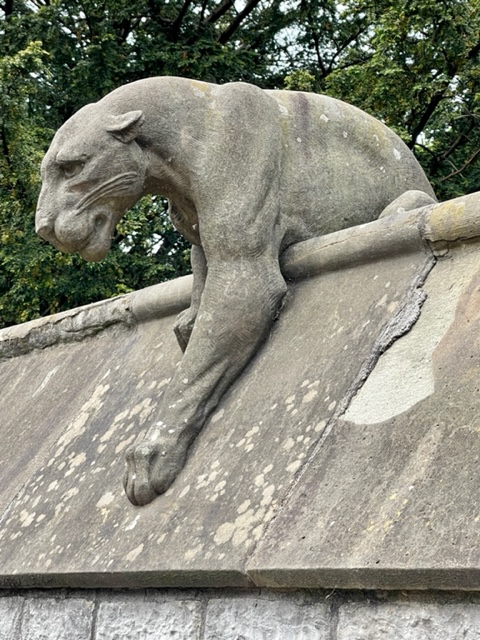
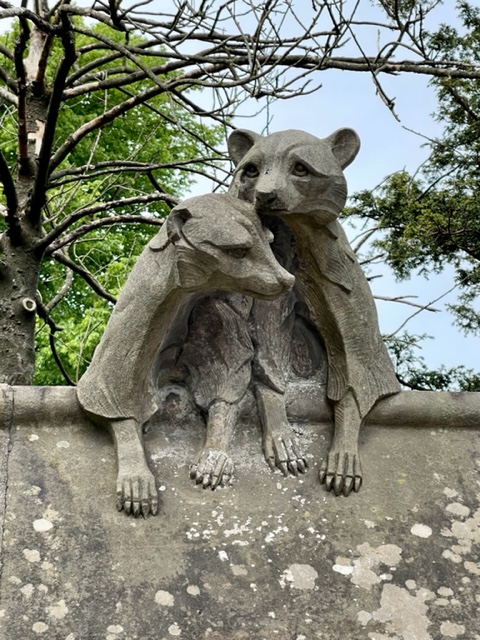

The castle has survived over the centuries; from Roman times, the Norman Conquest, through a Victorian transformation and the terrors of World War II. It’s evolved in a way that few others can claim. Today, it’s a big tourist attraction throughout its complex of structures. You need several hours to take it all in; with time to linger and lounge around its large Public Square.
In the mid-18th-century, Cardiff Castle passed into the hands of the Stuart Dynasty. John, 1st Marquess of Bute, renovated the main castle, turning it into a Georgian mansion, landscaping the castle, and demolished many of the older medieval buildings and walls.



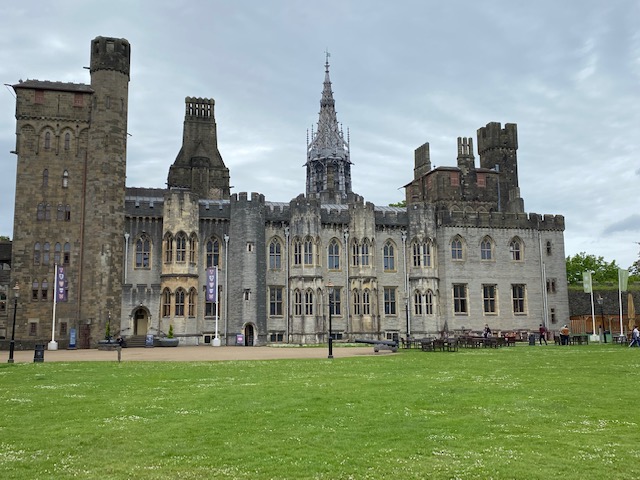
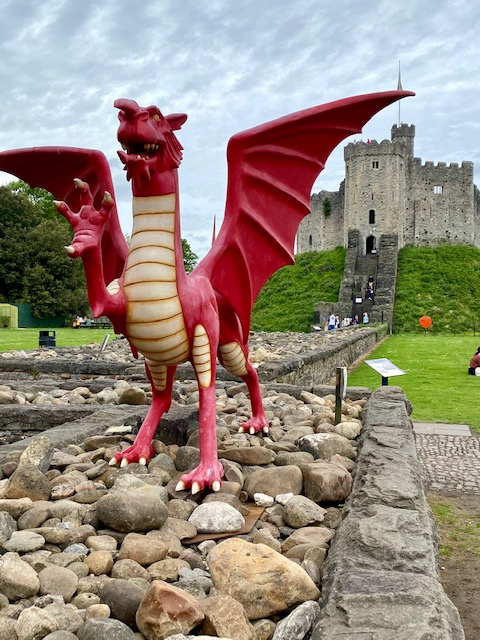
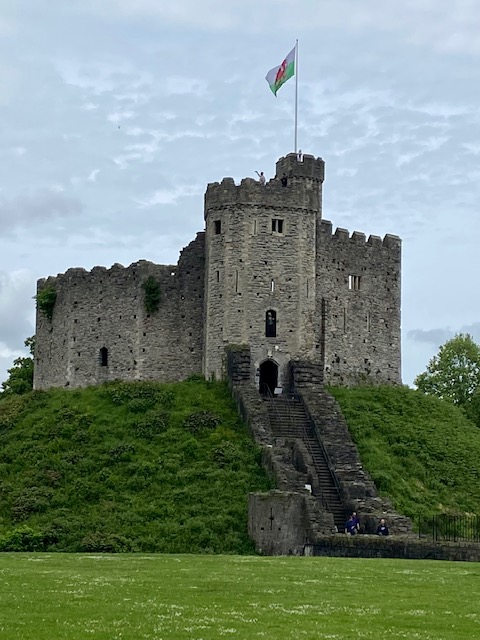
During the first half of the 19th-century, the family became extremely wealthy as a result of the coal industry. However, it was the 3rd Marquess of Bute who truly transformed the castle; using his vast wealth for extensive renovations. He remodeled the castle in the Gothic revival style. The resulting interior designs are amongst “the most magnificent that the gothic revival ever achieved”.
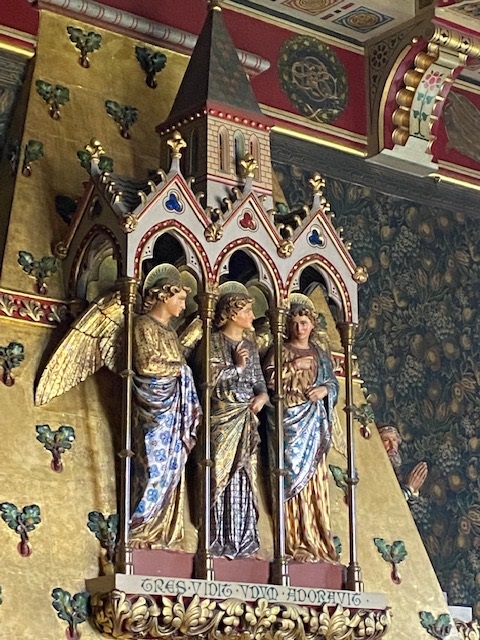
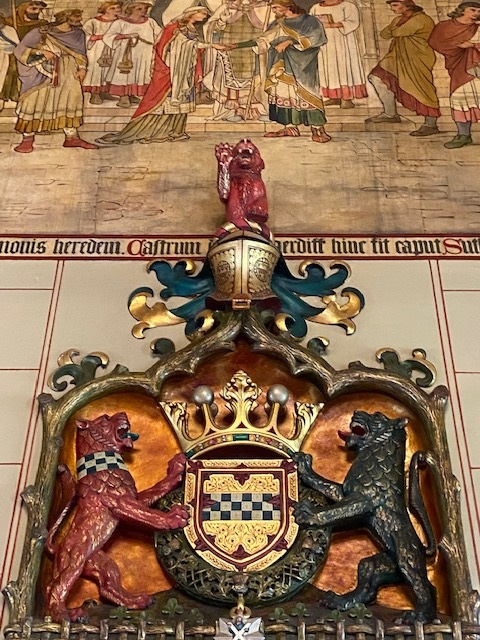


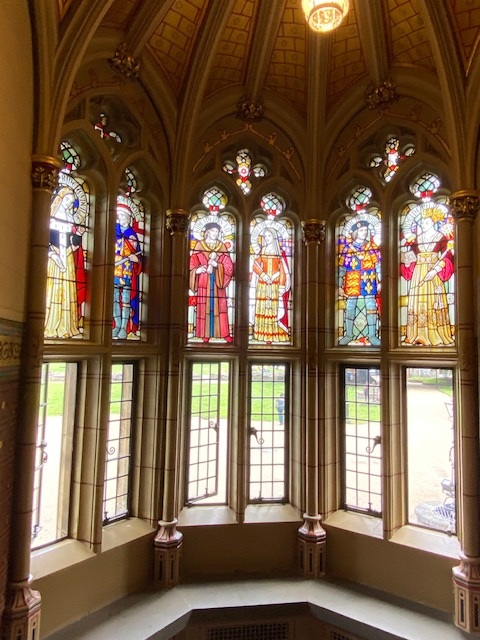

The Arab Room is absolutely breathtaking and prompts a great, big WOW! with its amazing, opulent interior. William Burges (1827-1881), one of the greatest Victorian architects and designers, created the Arab Room in 1881. It was this room that he was working on when he died. The ceiling remains one of his masterpieces; made of wood covered in gold leaf and decorated. The interiors have been described as “three dimensional passports to fairy kingdoms and realms of gold.”
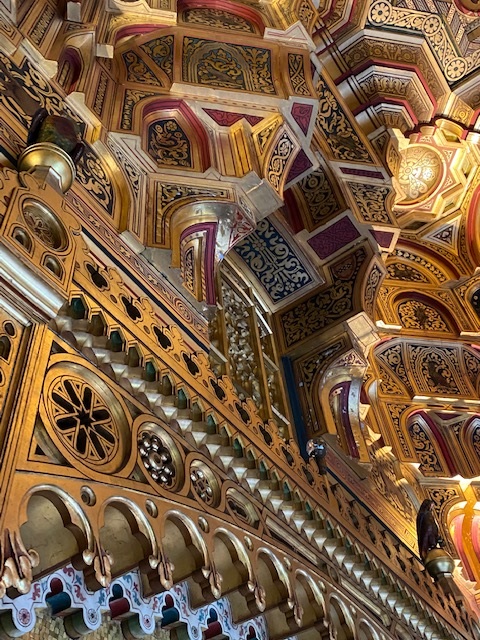
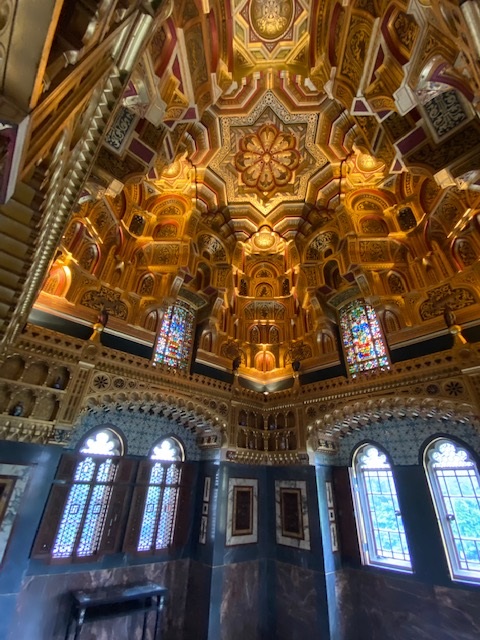
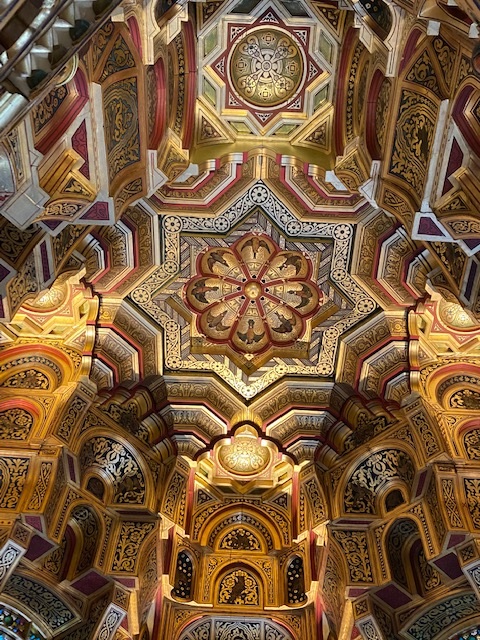
Cardiff Castle has been used for a range of cultural and social events. Various musical performances have included: Sir Tom Jones, a Welsh native, Green Day and the Stereophonics, with a capacity of over 10,000 people on The Public Square. A-ha, the Norwegian pop group (“Take on Me”) appear here this week!
Here, too, we happened upon the first of the fun Snoopy sculptures, as part of an Art trail across South Wales; raising money for Dogs Trust, the UK’s largest dog welfare charity. Each one is designed by a different artist. They’re being displayed on the streets of Cardiff and Caerphilly (see below) and other places.
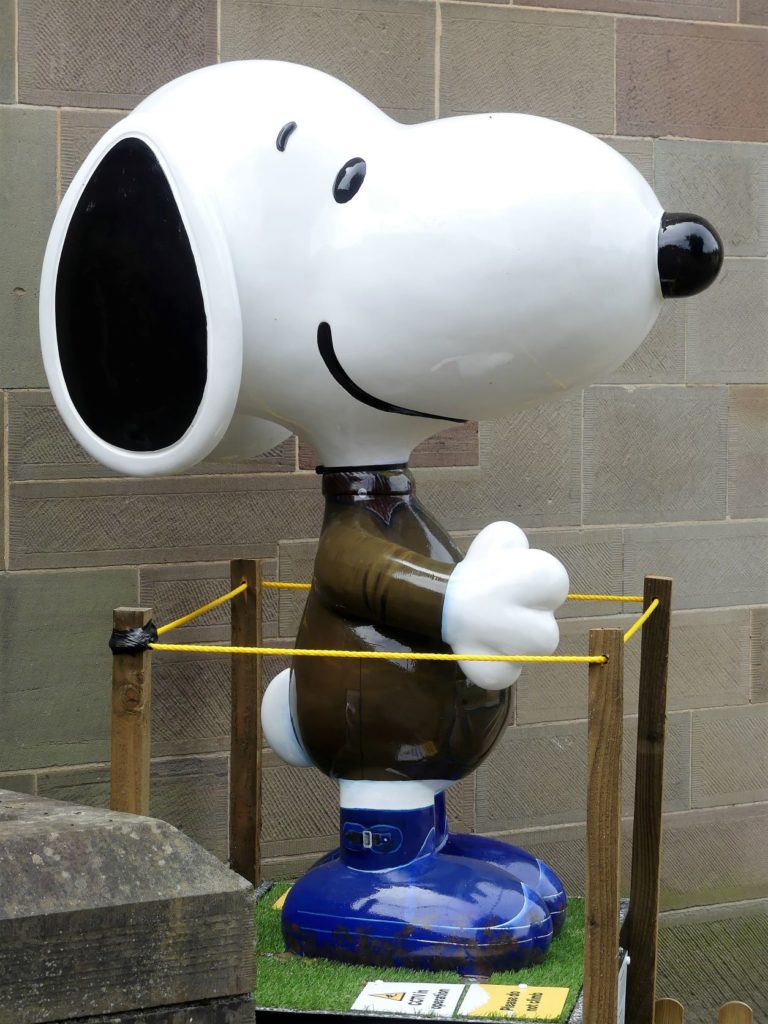
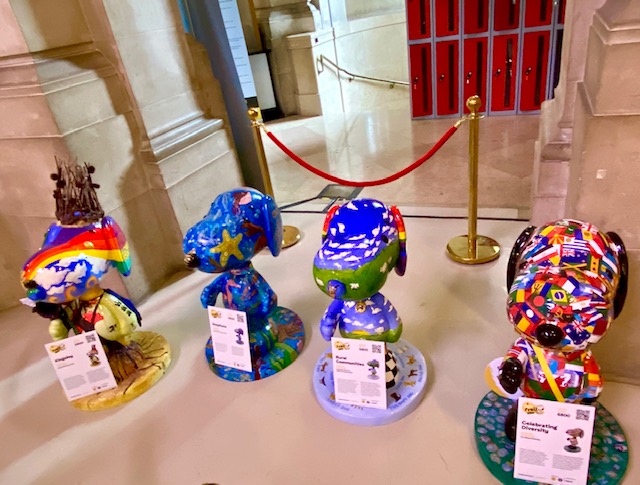

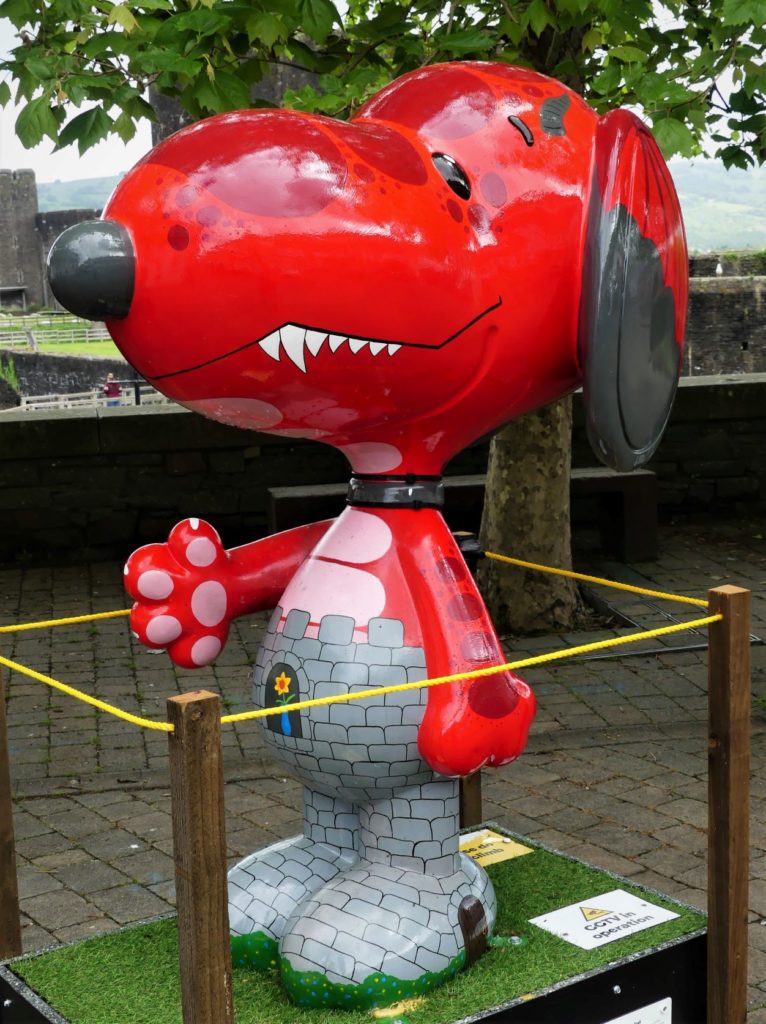


After departing the castle grounds, we crossed the street to Nata & Co., a tantalizing Portuguese bakery and treated ourselves to some hot tea and Pastéis de Nata, the yummy Portuguese custard tarts, David’s favorite.
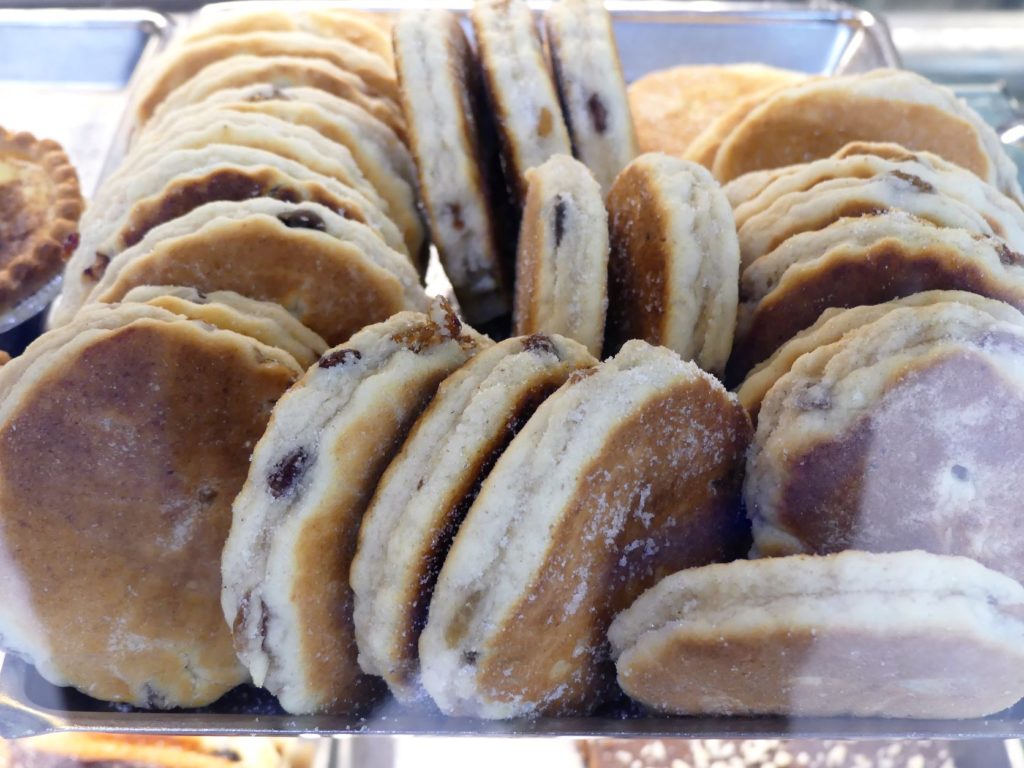
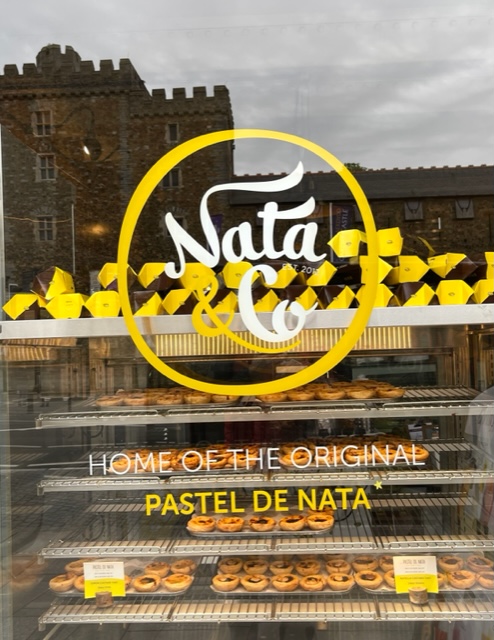
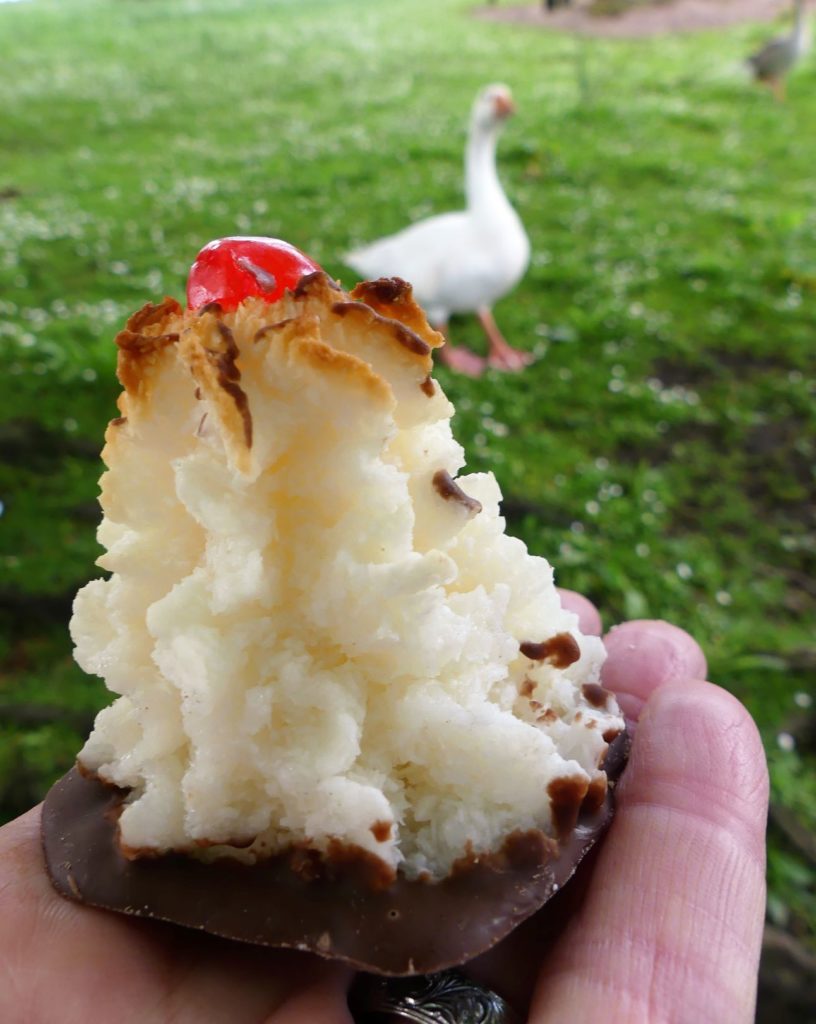
CARDIFF NATIONAL MUSEUM
Cardiff National Museum (Welsh: Amgueddfa Genedlaethol Caerdydd) was founded in 1905. Small and intimate, it possesses one of Europe’s finest collections of Impressionist Art. Many of its notable French art and Old Master paintings can be attributed to the sisters, Margaret and Gwendoline Davies, granddaughters of the wealthy industrialist, David Davies. They bequeathed their collection to the National Museum in the 1950s and 60s; making it one of international importance and renown.
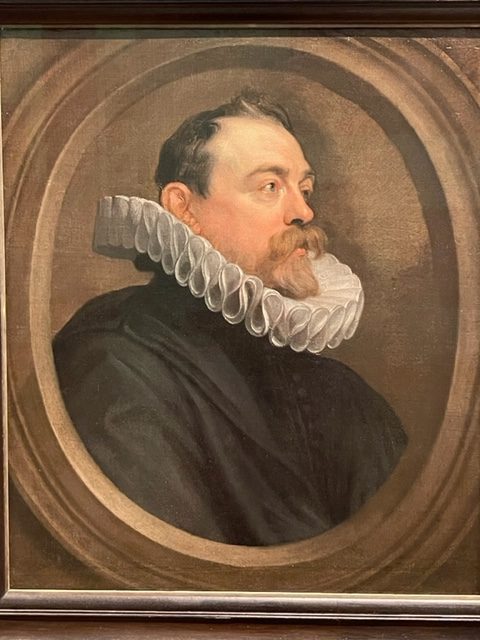
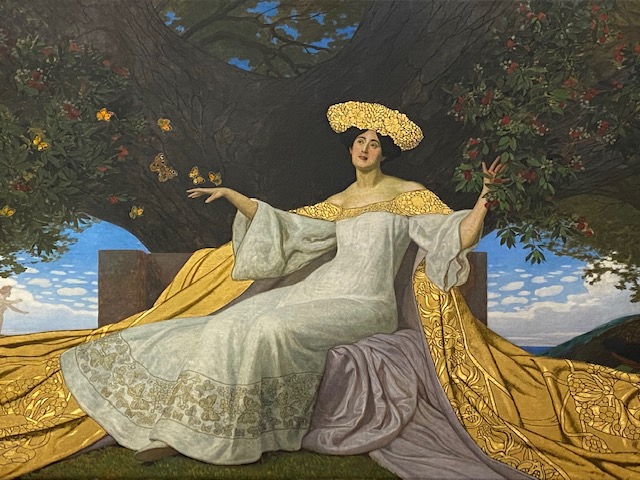

Among the many incredible works of art: the largest group of paintings by Honoré Daumier in the world; the most important by Jean-François Millet in Britain; Claude Monet; Van Gogh; Cézanne. The two most popular and famous treasured works in the Davies Sisters’ collection are “La Parisienne” by Pierre-Auguste Renoir (1874), which was exhibited in the premier Exposition of Impressionist Art of 1874, and a version of Rodin’s “Kiss,” cast in bronze.

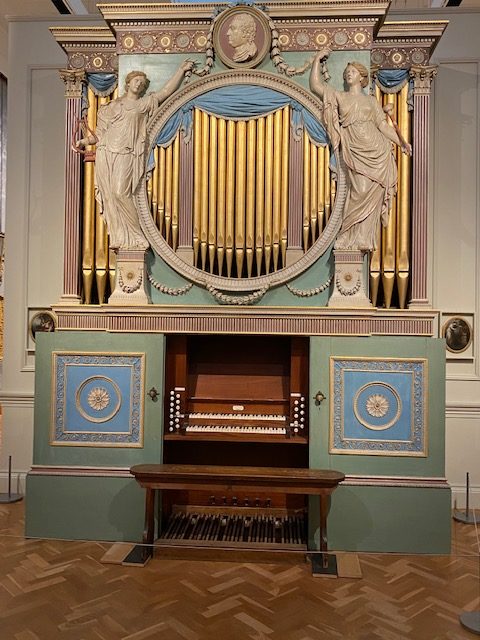
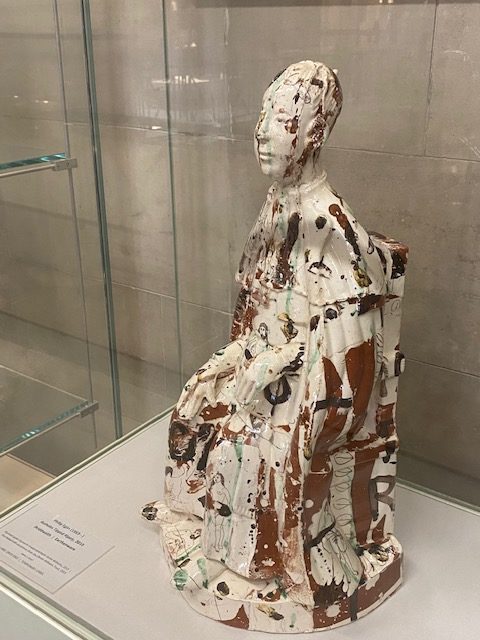
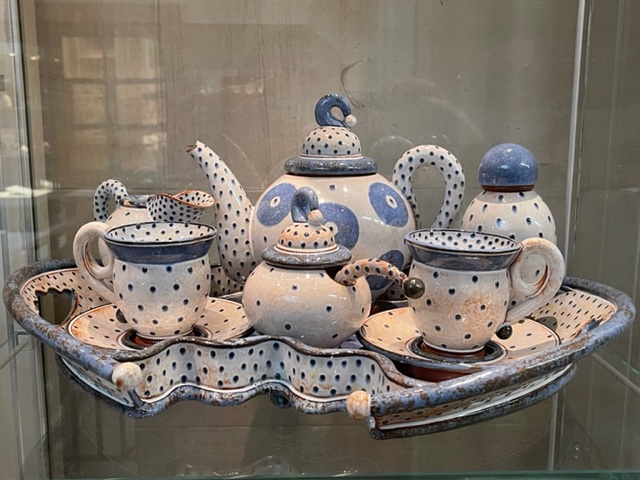
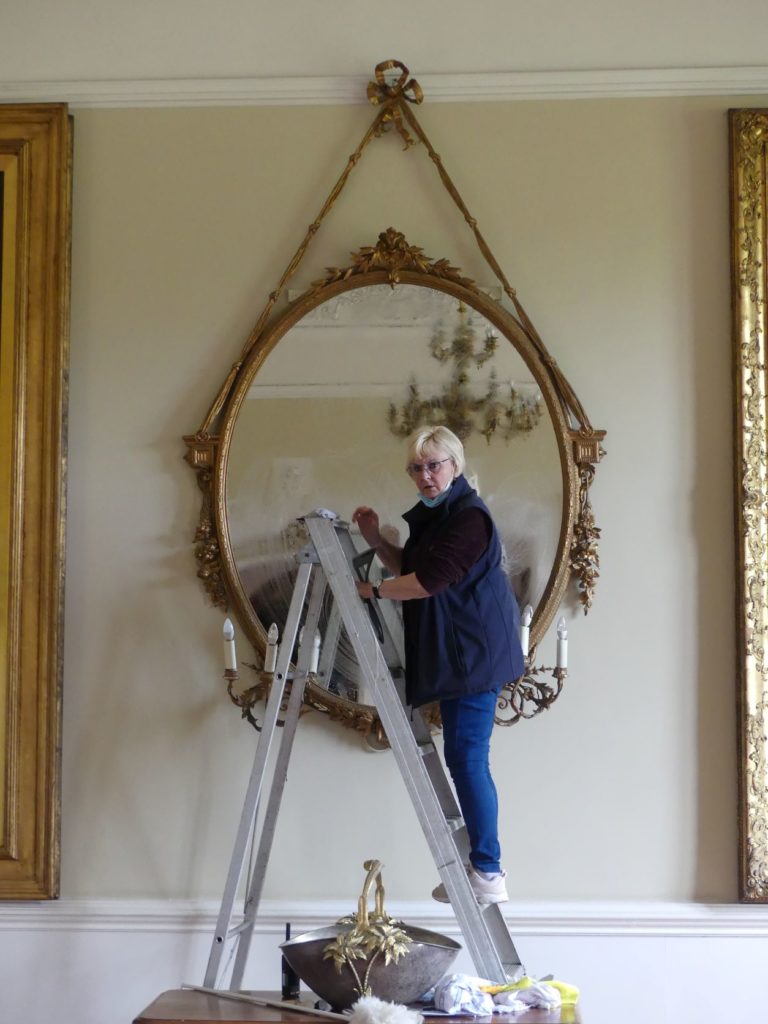

During our hotel check-in, a guest was asking the proprietor how to reach the museum (a nice, scenic walk through the compact central core). It was her only reason for visiting Cardiff (from California!), and she was very determined to visit the museum. We both kind of shook our heads listening, wondering why she was so adamant about it.
The next morning, at breakfast, my curiosity took over, and since she was dining alone, I went up to her and asked, “Was there a particular artist or painting that she was so interested in?” She replied, “Yes, ‘The Pool of London’ by Monet!” I then asked why. It turns out she was an art professor and was building a whole lecture around the masterpiece and wanted to experience it in person. This is the sad part – the painting was temporarily out on loan!
This museum was an absolute gem of a find. We spent a rainy afternoon moving slowly about its salons; mouths agape at one masterpiece after another.
TINTERN ABBEY
Tintern Abbey (Welsh: Abaty Tyndyrn) in Chepstow, in the picturesque Wye Valley, was founded in May 1131 by Walter de Clare, Lord of Chepstow. It was the first Cistercian foundation in Wales, and only the second in Britain. Now it lies in eerily quiet, but sacred ruin.
The Cistercians are a Catholic religious order of monks and nuns, founded in 1098. Their constitution, “Carta Caritatis” (Charter of Love) laid out their basic principles of obedience, poverty, chastity, silence, prayer, and work. With this austere way of life, they were one of the most successful orders in the 12th and 13th-centuries. It all came crashing down, with again, Henry VIII, who ended monastic life in England; and 400 years of Tintern Abbey.
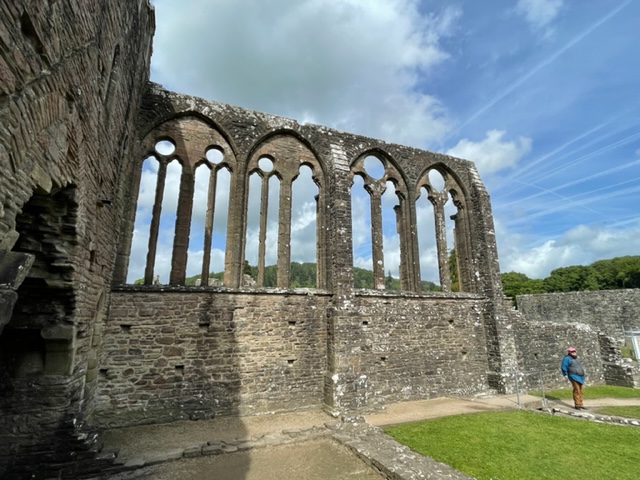
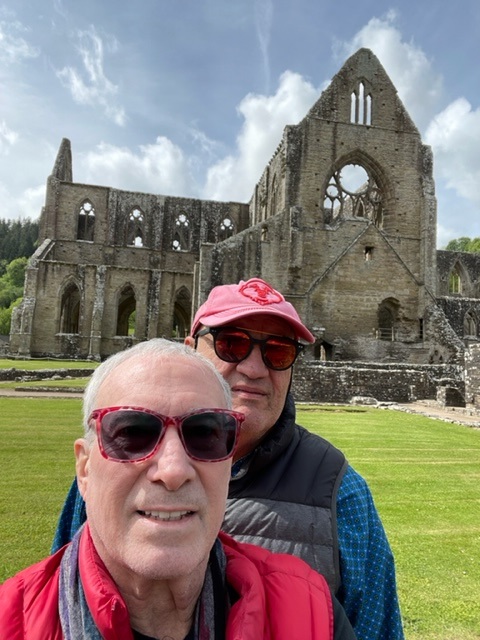
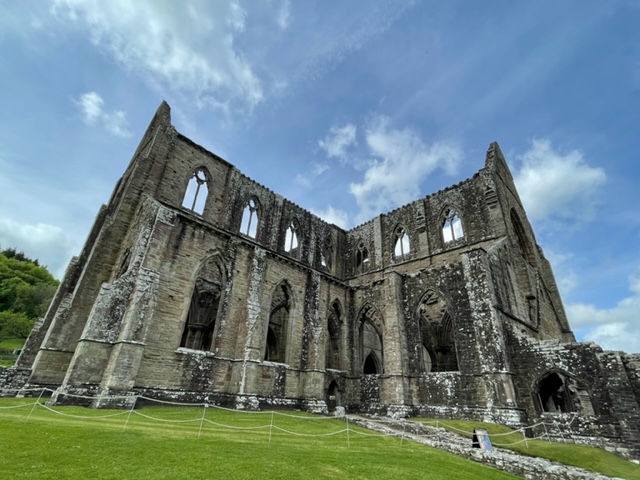


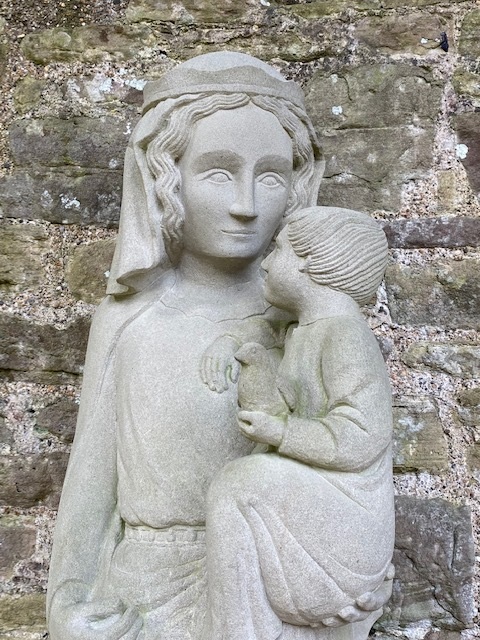
In 1901, Tintern Abbey was bought by the Crown of England; the site acknowledged as a monument of national importance. Limited repairs were done within the ruins in the 18th-century, as part of the birth of tourism to the area. But it wasn’t until recently that great improvements were made at the Abbey to keep it standing. We wandered through, admiring the beautiful remains.
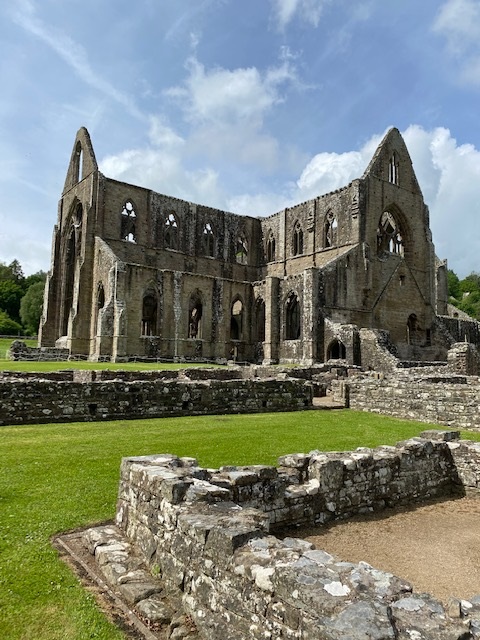
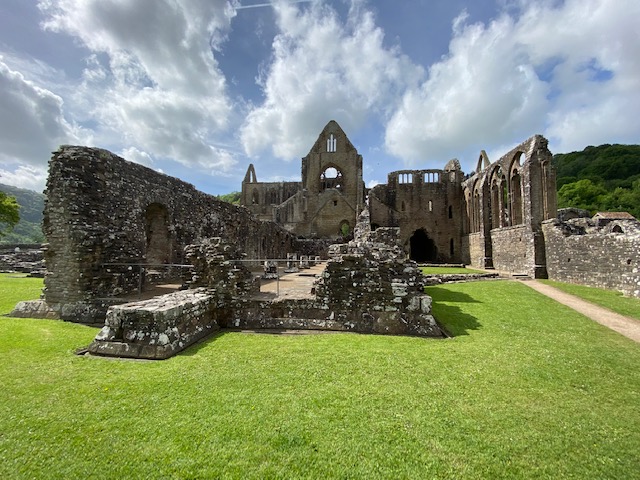

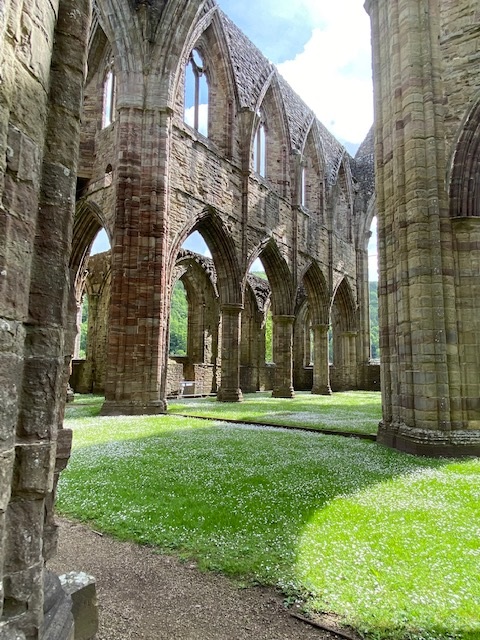
The fun of traveling is one never knows what surprises lie just around a corner or a bend in the road …
We had a serendipitous encounter upon arriving into the Abbey’s car park; when a French contingency of Morgan car aficionados suddenly appeared. It was like a mini-rally of the classy and stylish retro-looking automobiles. This devoted bunch of “mog” owners were attending a tour of the car factory, located in Malvern Link in Worcestershire (about 40 miles away).
The cars were from many different eras, according to the lady who asked me if it wasn’t “too cheeky,” to move my car; this way, all the Morgans could be lined up for picture opportunities. I gladly complied and was thrilled to be a happy bystander.
The Morgan is a British, classic two-seater, sporty roadster (made since 1909); expertly hand-crafted, using wood, aluminum and fine leather. They’re still made in the same style today. Morgans have an avid and dedicated (wealthy) fanbase. With all today’s new technology, they can cost in excess of $125,000.
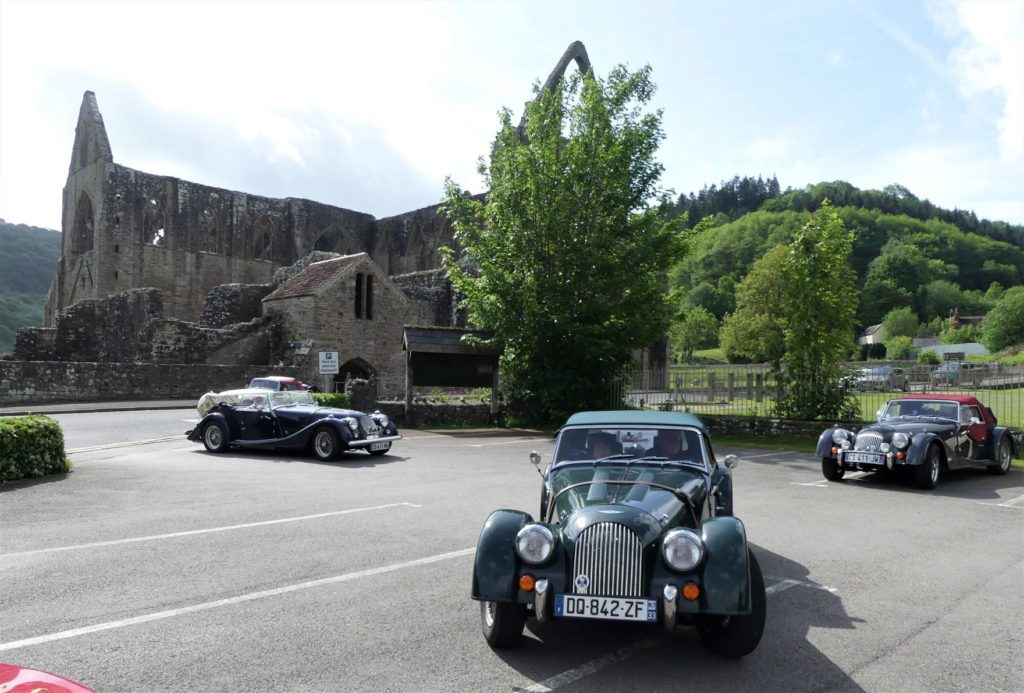
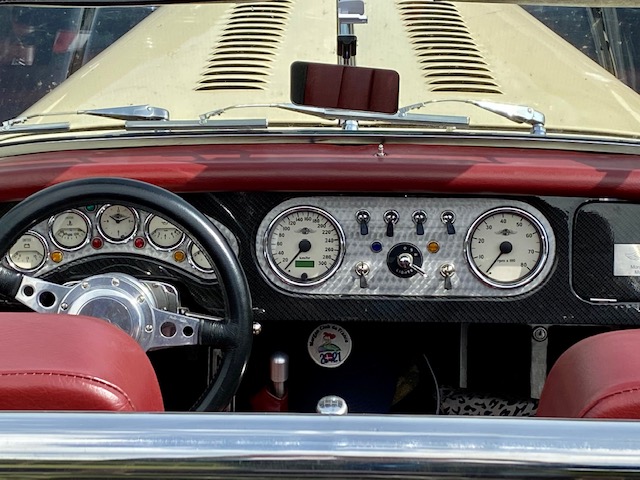
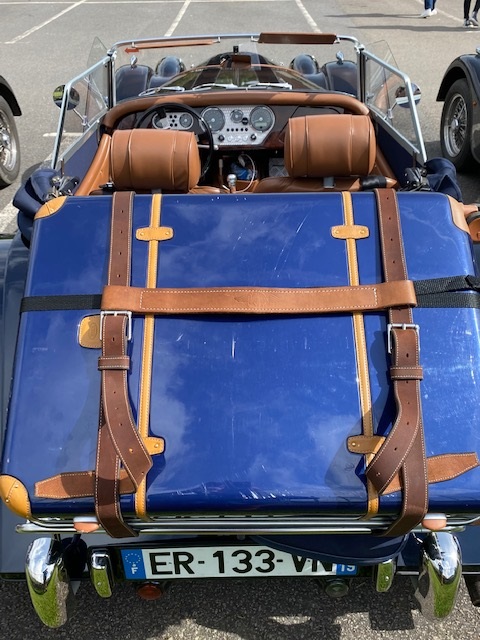
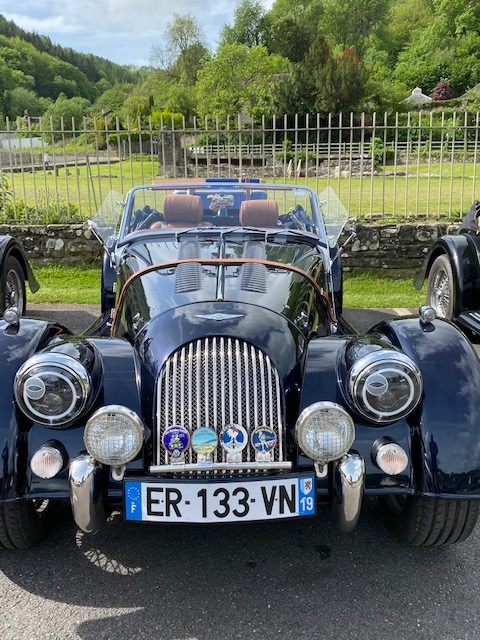
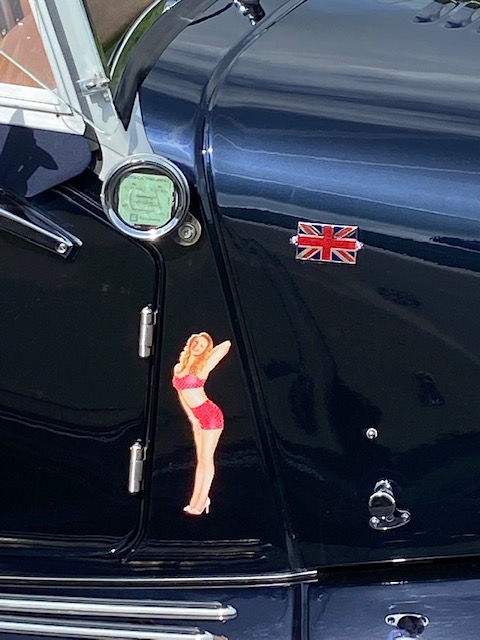

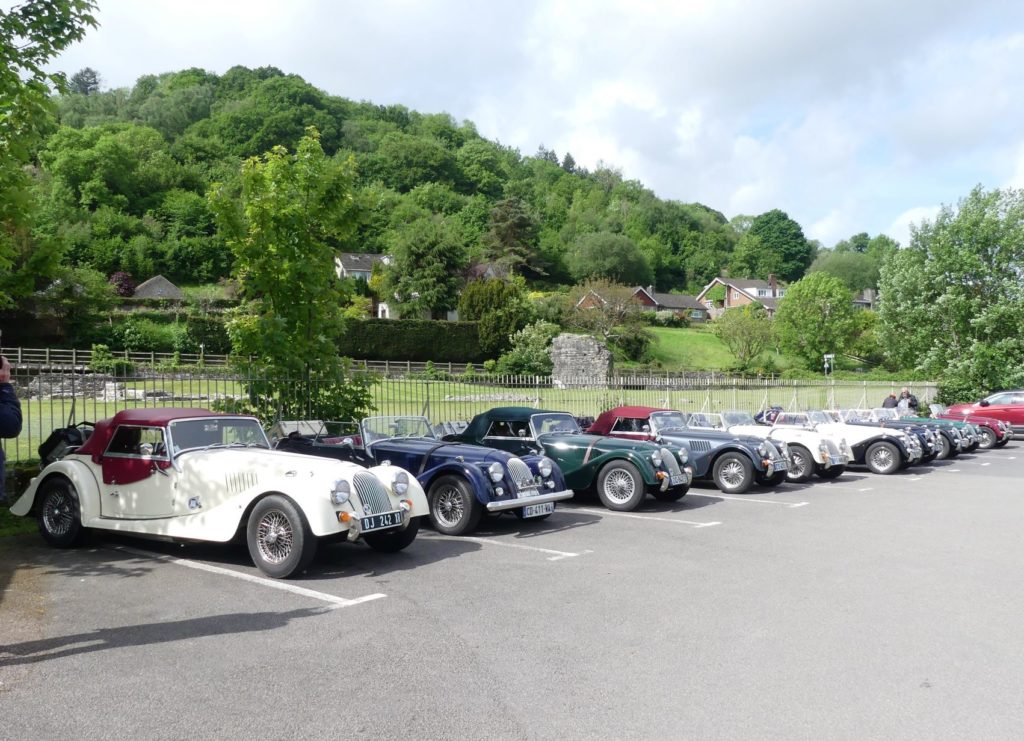
They’re totally customizable to the owner’s requests and specs, and can take up to a year to build. Many of the vehicles were adorned with medallions and fancy flourishes. The Morgan is a thing of beauty, and a gorgeous piece of machinery.
Maybe, if I’m a good boy this year, I’ll find one under the Christmas tree!
.
CHEPSTOW CASTLE
A short drive away is Chepstow Castle (Welsh: Castell Cas-gwent), in the old market town of Chepstow. It’s the oldest surviving post-Roman stone fortification in Britain, though again, in ruins, with only its outside walls still standing. The town surrounding the castle was as charming as any of the many villages that we’ve come across.
Located high above cliffs on the River Wye, construction of the castle began in 1067. In the 12th-century, it was used in the conquest of Gwent, the first independent Welsh kingdom to be conquered by the Normans.
By the late 18th-century, its ruins became, along with other sites in the Wye Valley (Tintern among them), a “picturesque” feature on the popular “Wye Tour”, the first guidebook to the castle and town; as written by Charles Heath of Monmouth, and published back in 1793.


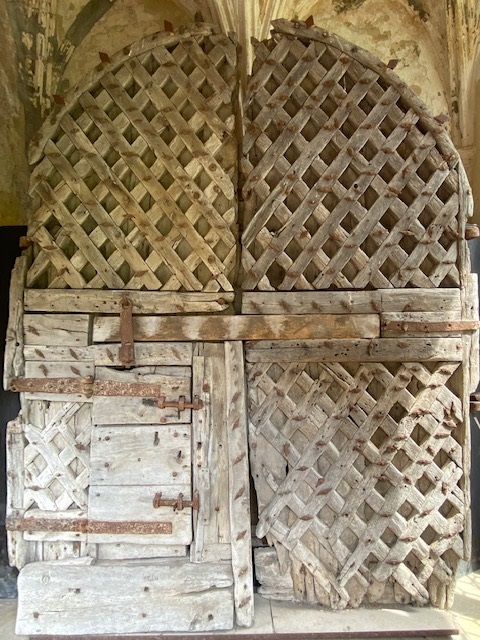


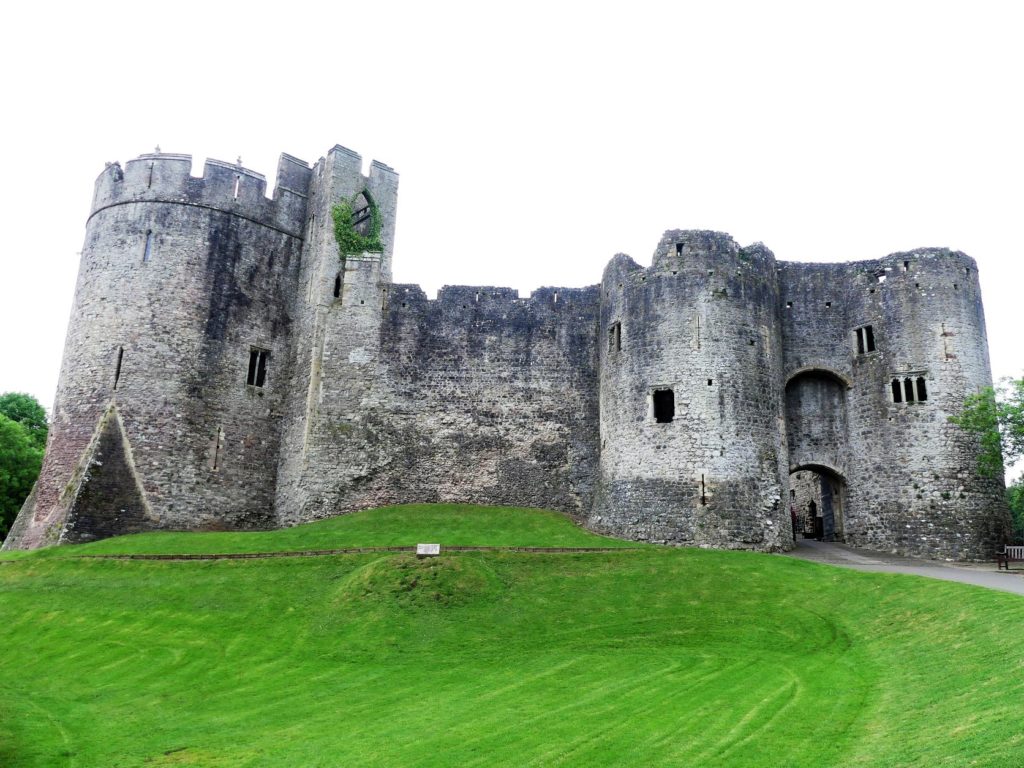
In 1913, the American silent feature movie, “Ivanhoe,” starring King Baggot, was made on the grounds, one of the first films ever to be made overseas. The following year, the castle was bought by businessman, William Royse Lysaght, and conservation work began.
CAERPHILLY CASTLE
I love our early morning starts, as we’re usually the only ones wandering about ~ down corridors, up turrets and basically having the castles to ourselves. This was the case for the Caerphilly Castle (Welsh: Castell Caerffili), another glorious heap of ruins. It occupies around 30 acres and is the largest castle in Wales, and second-largest castle in the United Kingdom after Windsor Castle.
Here’s an immense medieval fortification from the 13th-century; famous for having introduced concentric castle defenses to Britain and for its large gatehouses. It’s surrounded by extensive artificial lakes, and considered by historian Allen Brown to have “the most elaborate water defenses in all Britain.”
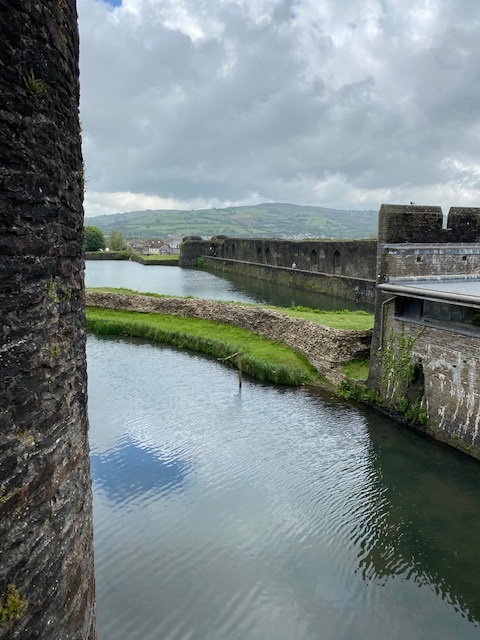
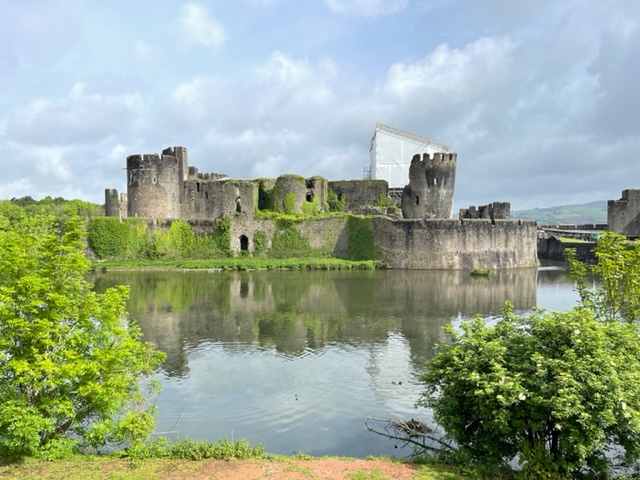
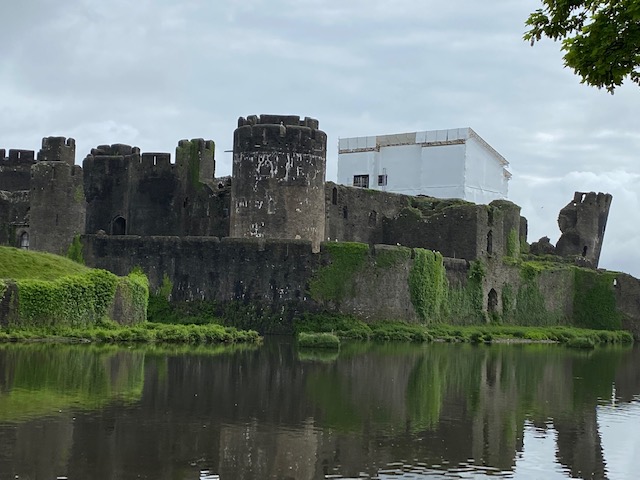
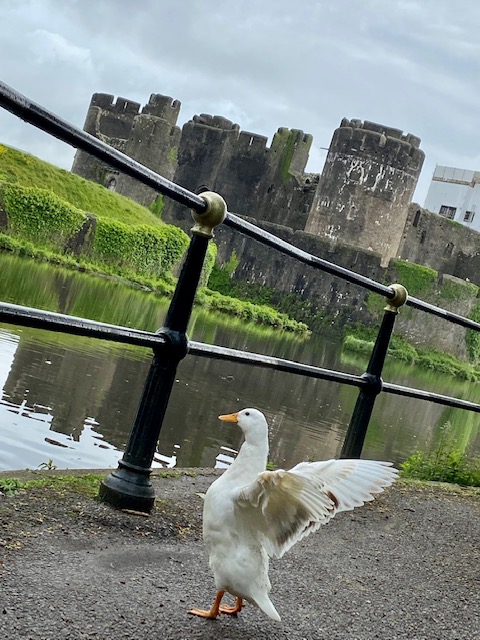
The castle’s southeast tower leans at an impressive 10 degrees to the vertical, and dubbed “the Welsh Tower of Pisa.” That makes it greater than the Leaning Tower of Pisa. The effect is awe-inspiring to see, especially up close. Also, the Dragon Lair lends a fun Disneyesque aspect, with a fire-breathing loving couple, Dewi and Dwynwen (you figure who’s the boy and girl), playing out their legendary story in Welsh mythology handed down through the ages.

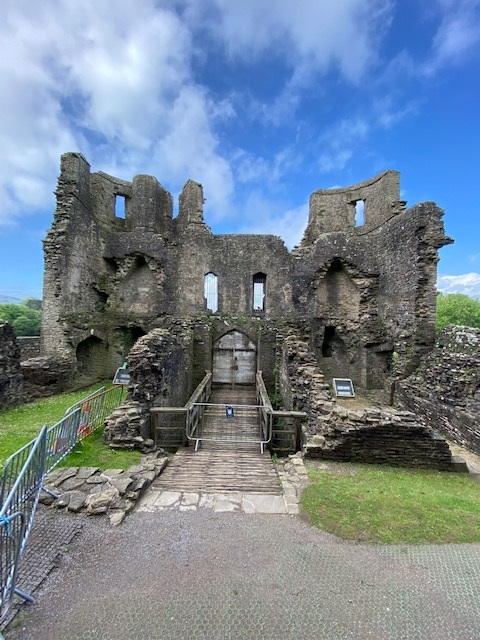
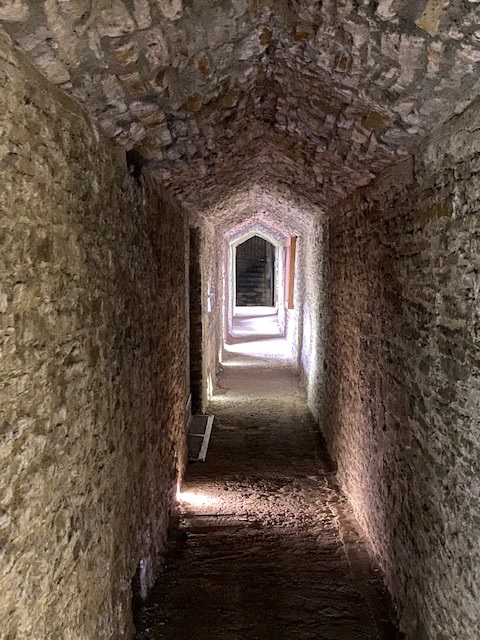
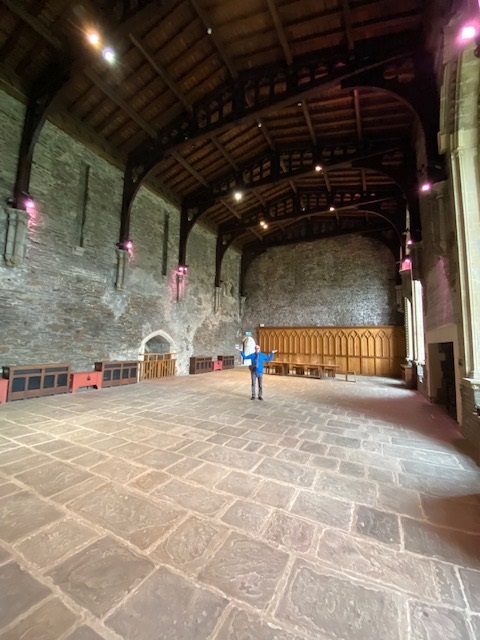
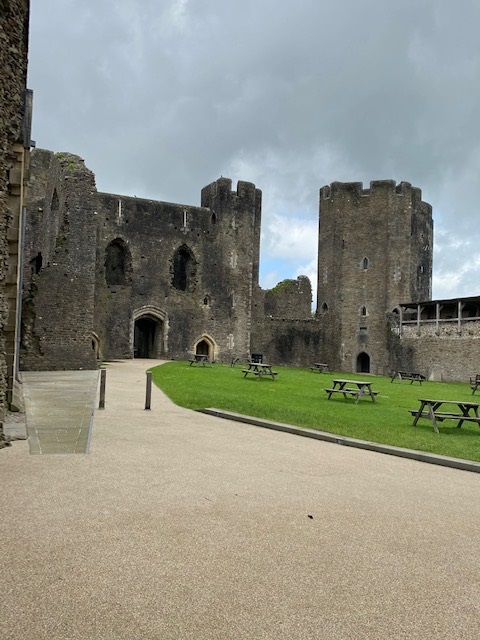
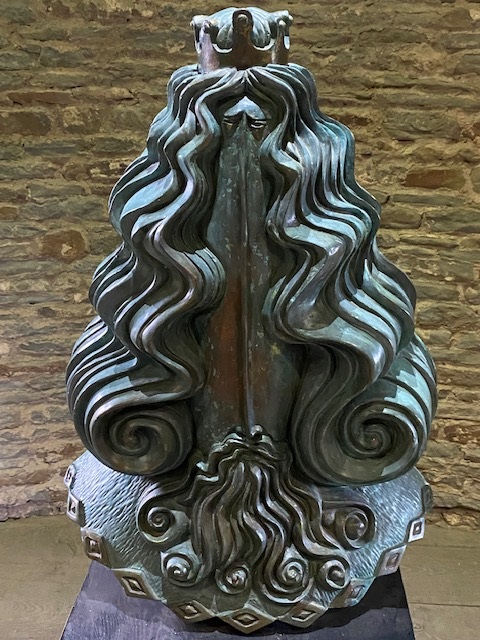
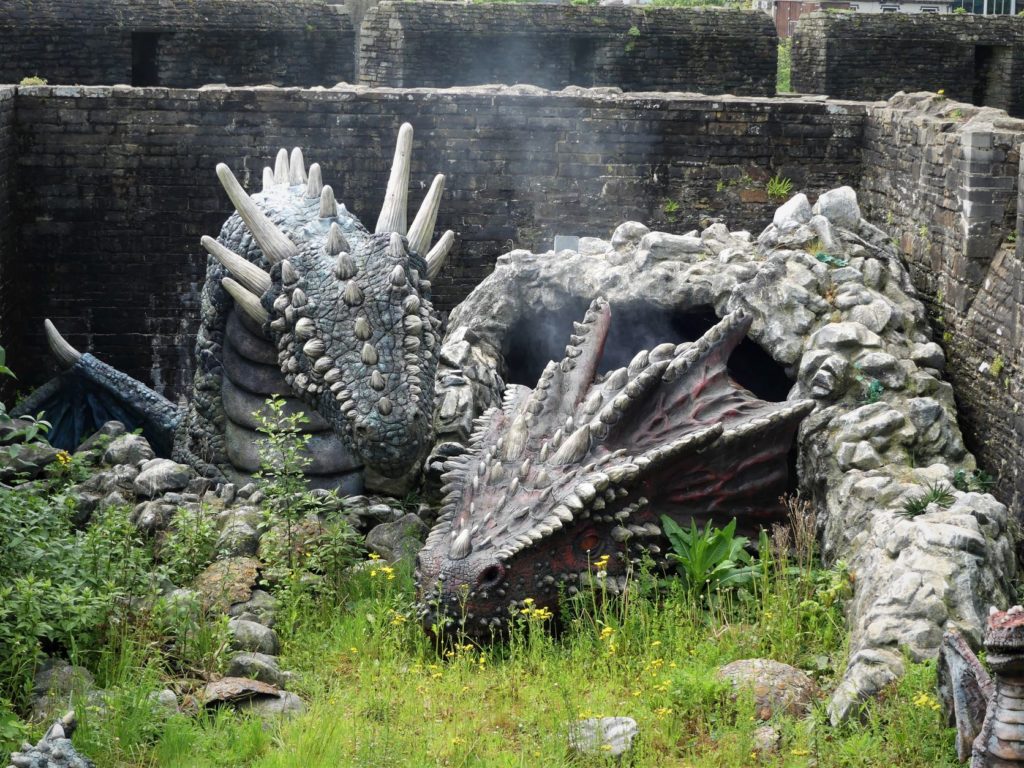
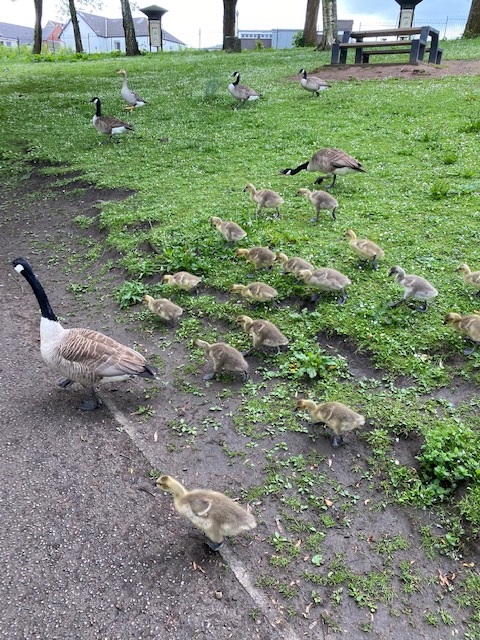
Here’s a quick, condensed history of the Caerphilly Castle:
1268: Built by an invading Norman Lord; 1270: Destroyed by a Welsh Prince; 1271: Built again bigger, stronger, now Wales largest castle! 1316: Lady Leads takes charge of castle’s defenses during a six-week siege; 1326: Hideout for a doomed English King; 14th-16th centuries: the lakes had drained away, and the walls were robbed of their stone; 17th-century: The famous leaning tower starts to lean! 19th and 20th-centuries: Coal millionaires restore the castle; Present: You can rent the Great Hall for weddings, a dream for any princess.
ACCOMMODATIONS
Lincoln House Hotel, B&B, is a lovingly restored Victorian townhouse, in the trendy Pontcanna district. It’s perfectly located in Cardiff’s historic city center; an easy walk to many nearby sights.
It’s got cozy and comfy, antique-filled rooms, a genteel lounge for guests and a bar. Lucky for us, our ground floor room didn’t require schlepping our luggage up treacherous, narrow and old staircases.

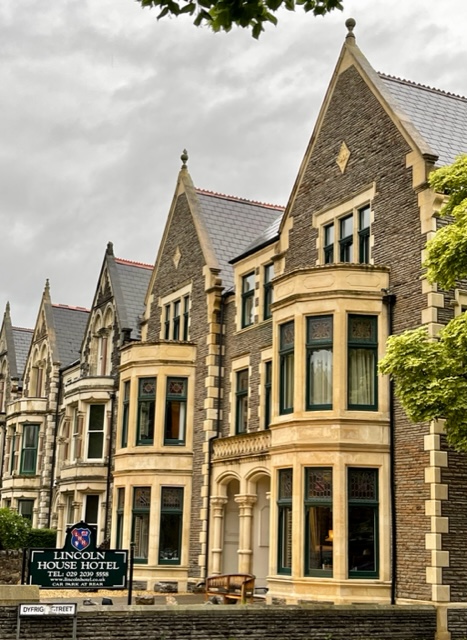
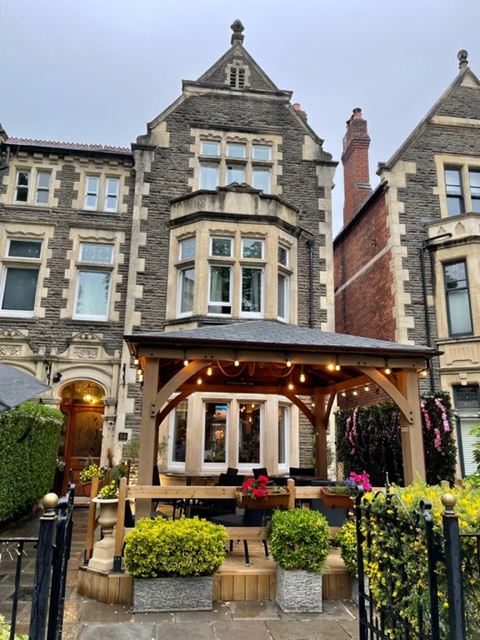

A charming and friendly hands-on proprietor, Carl, gave us wonderful, local suggestions, and a fantastic recommendation for dinner. The Full Welch Breakfast was a full “pig-on-a-plate” feast. I’ve never seen so much breakfast meat on one dish! But every bite was delish.
We had a fantastic Italian meal at the highly rated Elgano restaurant, located in another Victorian mansion, just down the block from our hotel. They served a delicious appetizer/starter of a rich Bolognese and carbonara pasta, perfectly cooked al dente; a beautifully prepared, falling-off-the bone lamb shank, and Branzino fish in garlic and lemon, a tad dry; a terrific tiramisu for dessert and a drunken affogato for me (that’s espresso with chocolate ice cream and topped off with a shot of Amaretto). It was a great way to end a drizzly day and oh yes, there was a terrific bottle of Italian red wine consumed.
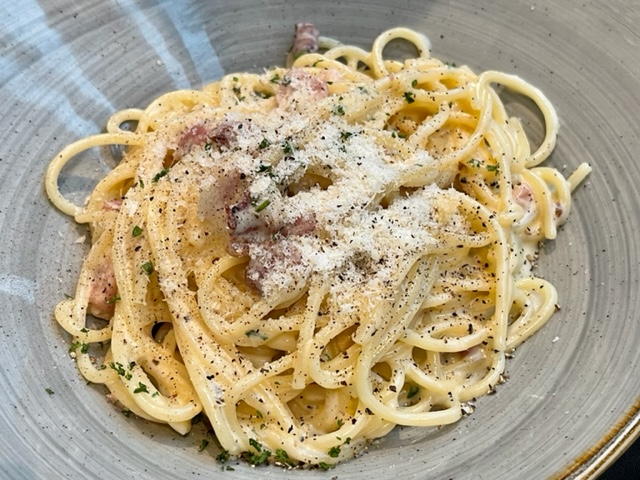
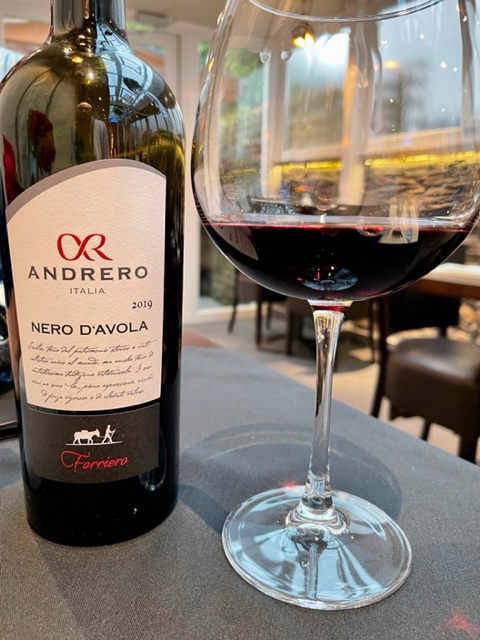
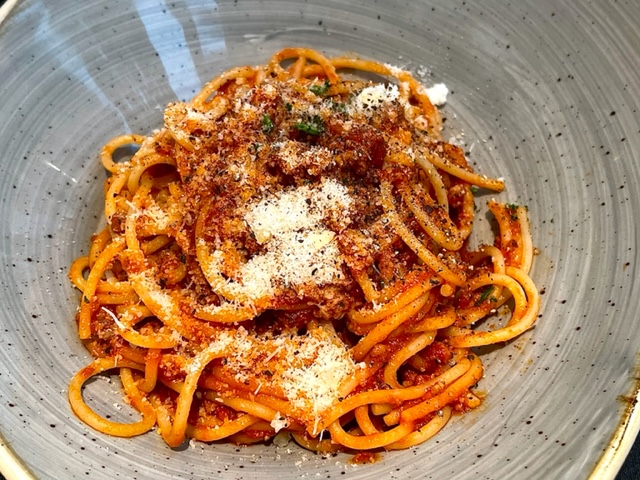
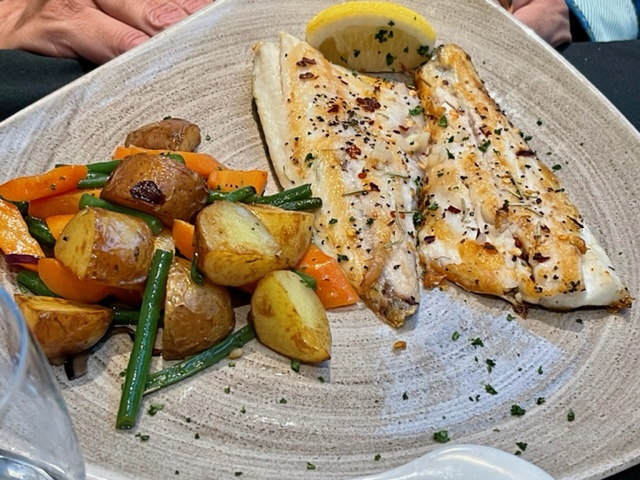
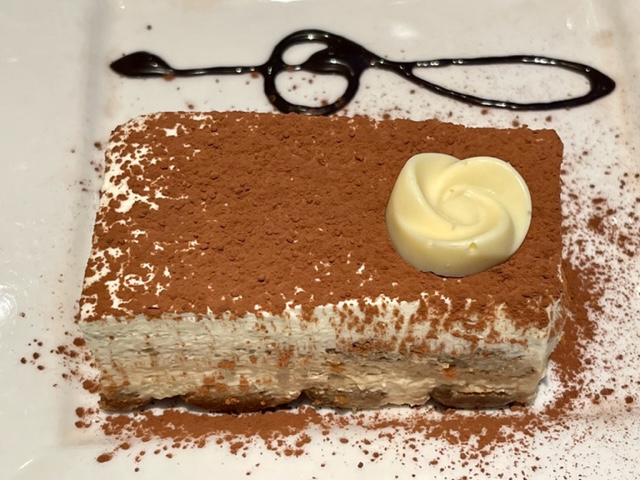

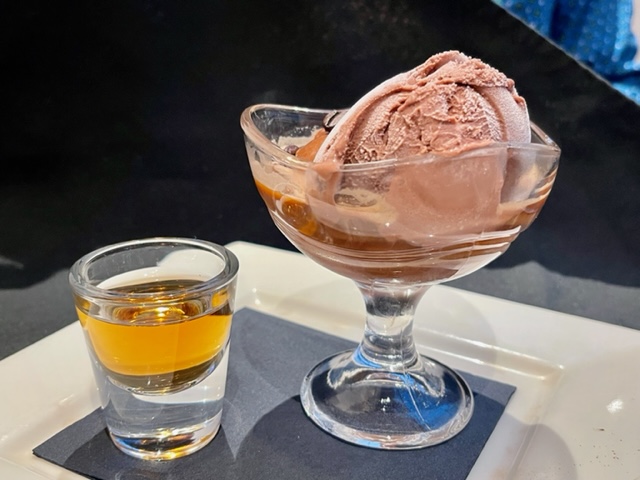
Now back to the Cotswold and Shakespeare country; we’ll be returning to northern Wales later on our travels.

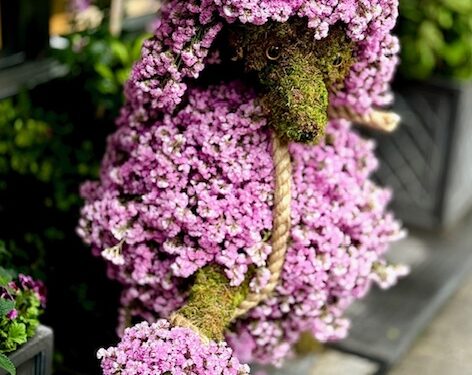


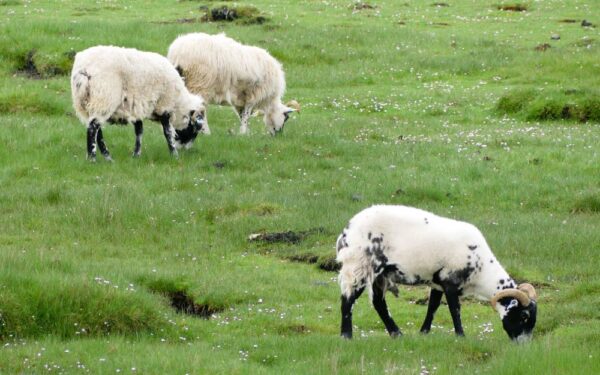
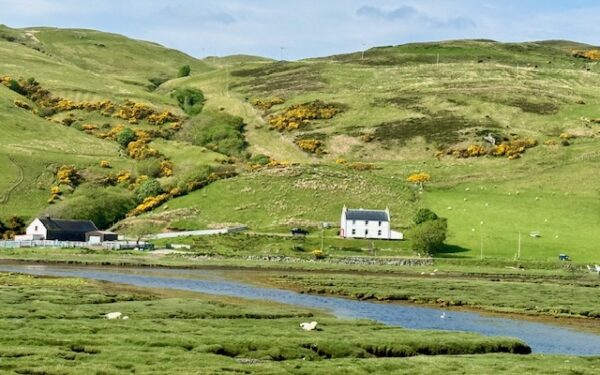
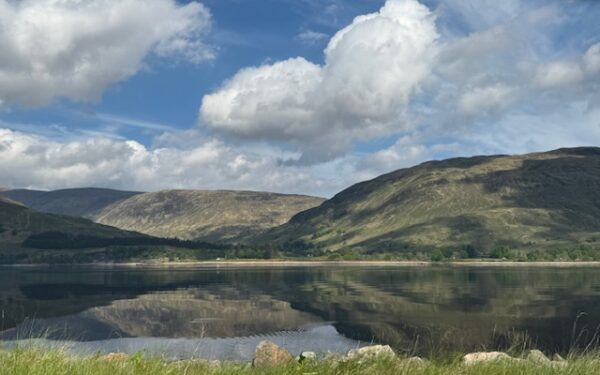
Wales looks amazing; we’ve never been there. The usual castles, fine arts, history aplenty, good food and wine – what’s not to love? You guys are having such wonderful experiences. Keep it up!